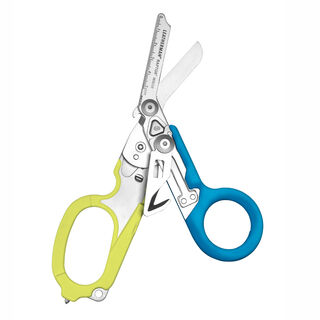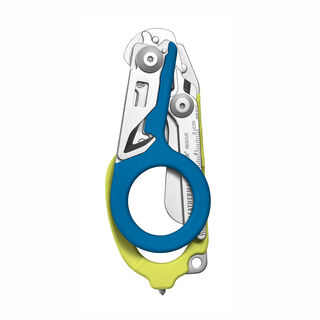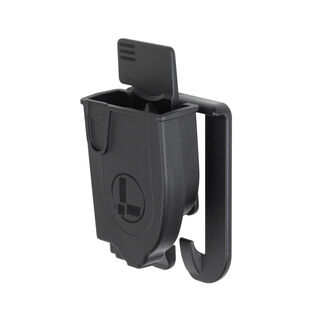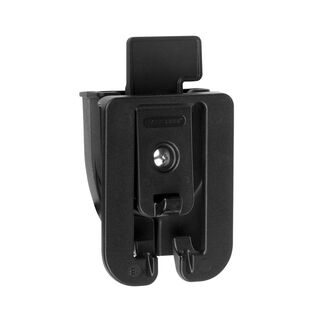Have ever wondered how first responders cut through clothing, seat belts, or even metal to help people in critical situations? It all comes down to training, quick thinking, and a reliable pair of trauma shears. And the Leatherman Raptor Rescue was designed to be the best.
When Raptor was created, it rewrote the rules for what was possible. Its cutting strength, foldable design, and high quality (unlike the disposable versions available) really made it unique compared other professional emergency shears. But what really made it special is that we worked with the people who actually do the job to find out what they need and what makes their lives easier.
In this article, we talk with Melissa Covel, the lead engineer on the project. She shares how the Raptor Rescue was developed and tested with real first responders. She also reveals some of the challenges and successes of creating a product that professionals can count on to help them save lives.

Thanks for taking the time to talk to us about Raptor. Can you tell our readers about what you do here at Leatherman?
I am the currently the Director of Product Development. I lead the engineering teams dedicated to product development. This encompasses the advanced development, design engineering, project manufacturing engineering, and project management teams. I guide our teams through the process of bringing new products to life, but I sometimes dabble in product design.
What is your everyday carry?
I'm a fan of the unique looks and simplicity of the Skeletool. With our ability to add color to the Skeletool line, I've had the opportunity to carry some great color combinations that speak to my personal aesthetic.

What was the need identified for the customer that Raptor was designed to solve?
The inception of the Raptor was driven by the specific needs of military medics, firefighters, and EMTs. Recognizing the limitations of conventional trauma shears, which often feature thin blades and rivets prone to stretching, we set out to engineer a robust solution. Our goal was to develop folding shears capable of slicing through the toughest materials, facilitating swift clothing removal, and patient extrication in critical situations.
Can you walk us through the development process with testers?
In the development of the Raptor, we engaged closely with medics across different military branches to gather their insights right from the conceptual stage. The foundational design elements, including the general shape and folding mechanism, were direct outcomes of these initial discussions. What followed was an iterative cycle of designing, building, and testing, punctuated with continual feedback from service members to refine usability and durability. I vividly recall an instance where a prototype was handed to a Navy SEAL; it was returned to us broken in mere minutes, which was a testament to the level of resilience needed for the tool.
How many prototypes did we go through?
The Raptor has been around for a while, so it’s challenging to remember the exact count of prototypes we went through. But let me tell you, there were a bunch! We were always tweaking things based on feedback or figuring out how to make them better for production. We experimented with a variety of designs, materials, and finishes. The holster is a whole story on its own. We must have hit the drawing board around fifty times for those parts. It’s all part of the fun in getting things just right.
Has the Raptor changed over time?
The core Raptor design has largely remained unchanged. However, we have made minor manufacturability improvements to it over time to ensure performance. We have touched up the blade grinds, the ruler marks, the plastic handles, and most significantly, we have made some improvements to the holster.

What kind of testing did we do or still do for the Raptor?
We subjected the Raptor to an array of rigorous tests. We challenged its resilience by cutting through an assortment of tough materials, including thick leather boots, combat uniforms, zippers, webbing, and splints. The springs underwent extensive cycle testing to verify their endurance. For the glass breaker, we went to town on car windows at a wrecking yard. A particularly notable test was the penny-cut test, which became a staple in our research. To ensure consistency in our results, we meticulously used pennies minted after 1982, due to the change in composition introduced that year. Overall, our testing included a mix of lab torture-tests and user-based field tests.

What makes the Raptor Rescue the perfect pair of trauma shears for first responders?
The Raptor Rescue is engineered with first responders in mind. Its design features enlarged handle loops for ease of use, even with gloves. The folding and compact design ensures it’s conveniently portable, while the robust blades are crafted to tackle the toughest of tasks. With a well-balanced suite of features, the Raptor Rescue equips you to handle both routine and unforeseen challenges with confidence. Moreover, it comes with the assurance of Leatherman’s 25-year warranty.











